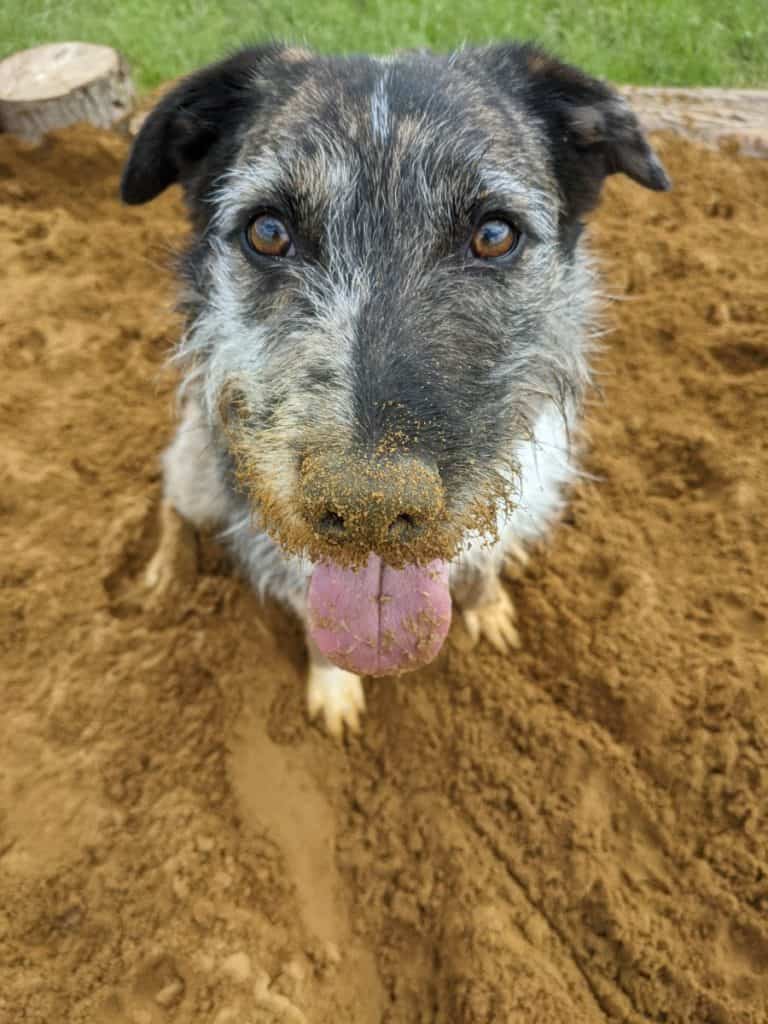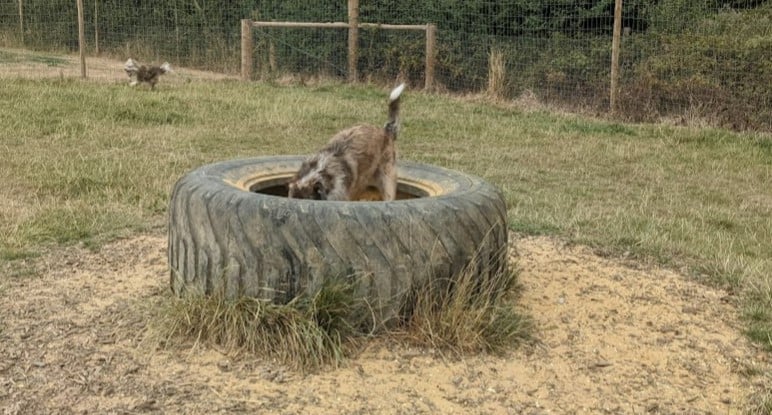Sand impaction can be a very serious condition for a dog (life threatening) and can happen quicker than one would think and is probably more common than one would think. A simple trip to the beach with your dog or having a sandbox in the backyard can be potential hazards.
If you suspect your dog has eaten some sand you should contact your Veterinarian or Animal Emergency Clinic immediately as they will be equipped to properly assess and care for your canine buddy.
We are all aware of the dangers of dogs eating foreign objects: socks, plastic baggies, rocks, kids toys, pieces of furniture, unsafe dog toys, etc but what about SAND?
Sand impaction occurs when a dog eats sand and the sand enters the intestines. The sand can cause a blockage. Symptoms can vary but could include the dog demonstrating discomfort, vomiting, diarrhea with blood and/or sand, less interest in food for water, and lethargy.
The Biggest Mistakes People Make When Building a Sand Pit in Their Dog Field
By far the most common mistake people make when installing a sand pit is using the wrong type of sand.
As an owner of dogs with white paws and legs, I’m made aware of the tell-tale signs of the wrong sand being used within seconds of my dogs getting stuck into a sand pit! Orange staining.
This means that the sand pit has been filled with building sand or sharp sand, the staining being iron – and showing that the sand has not been sold as ‘washed’.
Why is this a problem?
Aside from the fact that people don’t like their dogs to come back from a dog field a different colour, it has a lot of other issues. Construction sands are not designed to come into contact with skin, they have not been cleared as safe to do so and they are designed for building, not for playing in or getting in your mouth (a side effect of digging).
There are frequent debates about the safety of construction or industrial sands for sand pits but the conclusion is always the same – they are not designed for the job so don’t use them. Many construction sands have additives, fungicides and other chemicals in to make them better at the job they are designed for and the manufacturers are not always required to declare everything in them. They can come ‘clean’ or ‘washed’ but that doesn’t mean they are safe and some have very high levels of dust.

Good quality Play Sand is the right product to use in your dog field sand pit and yes, it is more expensive. This is because it goes through more intensive processing, with grading, cleaning and removal of nasties that can cause respiratory issues if inhaled. Dogs breathe more heavily than kids and they also mush their faces into sand pits so make sure you safeguard your customers by investing in the good stuff.
You can buy good quality play sand by the tonne bag for around £100 so a few bags once a year is a relatively small expense.
If you have a sand pit that has builder’s sand or any type of construction sand, don’t panic but, we strongly advise replacing it at your earliest convenience. There are dog owners who will know that these sands are potentially hazardous and it’s not what you want your customers to have as a take home impression. Whilst many dog owners might not be aware of the health risks, they may certainly object to the sticky fur and orange paw prints that result.
Play Sand is fine, regular in particles and is usually light in colour (although colour varies depending on source)
The second most common mistake people make when constructing a sand pit not making it deep enough.
Whatever depth you think your sand pit needs to be, you should probably double it! As you are building a sand pit for a variety of diggers, you need to accommodate the ones who want to get to Australia as well as those who came for a mani-pedi! 75cm deep is the minimum depth we’d recommend – deep enough for even the most earnest diggers to admit defeat.
Depth is also important when it comes to deciding what you line your sand pit with. You want something that allows the sand to drain but still retains it and prevents the bottom of your sand pit becoming mixed with the soil underneath. What you choose depends on how you are constructing your sand pit – is it raised off the ground, laid on the surface or submerged in the ground?
The important thing to ensure is that whatever you use, it is not going to present a risk to the dog if it catches a claw when digging.
A really popular way of containing sand is by using tyres but they’re not always the best solution. Here’s why:
We know – they’re free, hence their popularity, but you may want to consider investing some time and money in making a sand pit that is a good size, can be easily cleaned and maintained, and will last.

Sand pits need to drain so don’t line them with pond liner or they will turn into sinking sand in the wetter months.
They also need to be free draining to reduce the chances of a build up of bacteria and fungus.
Surely I just build a box and fill it with sand?
Like most things when building a dog field business, sand pits aren’t as straight forward as they look at first glance! You can make a box or fill a tractor tyre with sand from a builder’s merchant but you might not be very popular with your customers. Why?
500 DOGS ON A BEACH
A visit to the beach is an ideal way to spend a summer day, and it can be tempting to take your dog along. But be aware the beach isn’t the best option for all dogs. For example, some breeds like the Basset Hound can’t swim. However, for the right dog, the beach can provide new sights, sounds, and smells to experience as well as opportunities for exciting games. However, there are doggie dangers too. Maximize your fun by trying these activities, training these behaviors, and watching for these hazards.